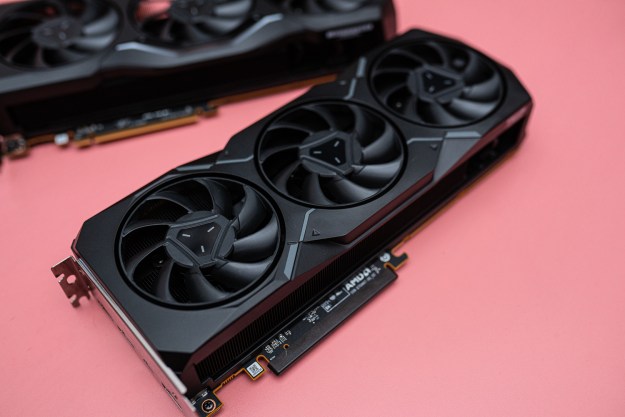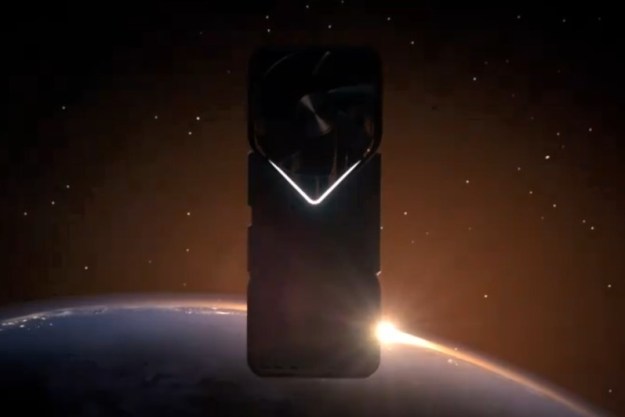Nvidia recently announced the $249 RTX 3050. It’s a return to budget GPUs that we haven’t seen from Nvidia in a few years, but given the disappointing launch of the recent AMD RX 6500 XT, some caution is necessary. We threw the RTX 3050 and RTX 3060 into the ring to see which is better for you.
After wrapping up our RTX 3050 review, we took our results and stacked them up against the RTX 3060. Both cards target 1080p AAA gaming, promising 60 frames per second (fps) in the latest big-budget titles, but only one card earned a spot in our roundup of the best 1080p graphics cards.
Pricing and availability
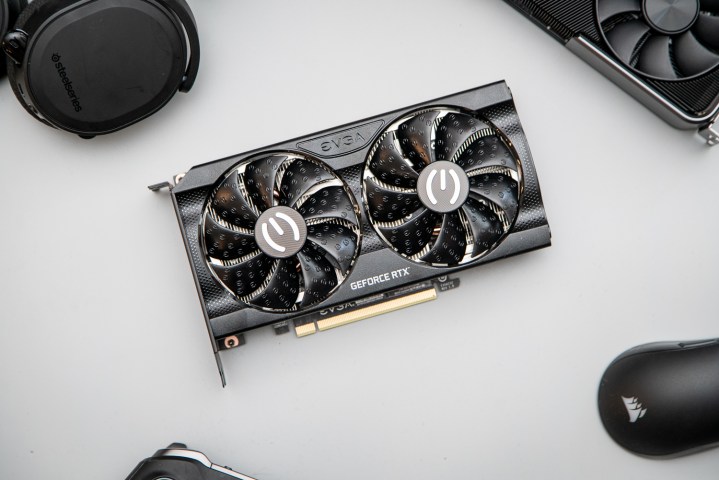
Like any graphics cards in 2022, the RTX 3050 and RTX 3060 are in massively short supply. The RTX 3050 starts at $249 and the RTX 306o starts at $329, but if you buy either of them after launch day, you’ll end up spending a lot more.
The GPU shortage is still kicking, and the RTX 3050 and RTX 3060 are victims to it. On eBay, the RTX 3060 is selling for between $700 and $800, with some exceptional deals lowering down to $650. The RTX 3050 just launched, so we don’t know what price scalpers will set. We imagine finding cards between $400 and $500 once the initial stock is gone.
You have a better chance of getting an RTX 3050 at list price. The card launches on the day of this review’s publication: January 25. There are cards, such as EVGA’s RTX 3050 XC Black, that are listed for $250. That stock will sell out quickly, but if you can grab a card at list price, it’s a great deal in today’s market.
In the much more likely scenario that you missed the fractions of a second to buy a card at list price, it’s tough to say. The RTX 3060 is the more useful card for most people, as our benchmarks below show. But it depends on what price you can find the RTX 3050 and RTX 3060 at to draw any firm conclusions.
Specs

List prices don’t mean much right now, but they serve as a basis of comparison for performance. On paper, there’s about a 28% difference in price between the RTX 3050 and RTX 3060. The RTX 3050 is trimmed down in a number of ways, but not at that same 28% across the board.
| RTX 3050 | RTX 3060 | |
| CUDA cores | 2,304 | 3,584 |
| RT cores | 18 | 28 |
| Tensor cores | 72 | 112 |
| Boost clock | 1.74GHz | 1.77GHz |
| Memory capacity | 8GB GDDR6 | 12GB GDDR6 |
| Memory bus | 128-bit | 192-bit |
| Memory bandwidth | 224GB/s | 360GB/s |
| TDP | 90W | 170W |
| Price | $249 | $329 |
There’s about a 43% difference in core count, for example, which carries across CUDA, ray tracing, and Tensor cores. The slight reduction in boost clock speed doesn’t impact performance much — you can easily boost the RTX 3050 with automatic GPU overclocking — but the shaved-down memory does.
It’s not that the RTX 3050 has 8GB of GDDR6 memory. That’s plenty for modern games, especially for the 1080p market the RTX 3050 is aimed at. The problem is the memory bus. With less memory and a smaller memory bus, the RTX 3050 has about 38% less memory bandwidth than the RTX 3060.
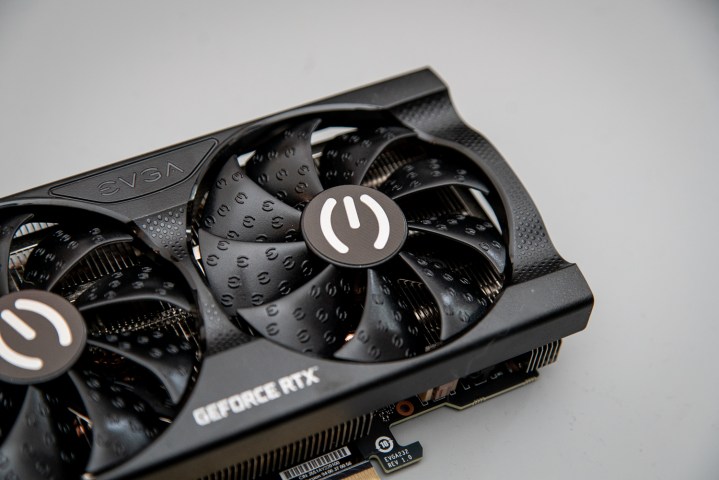
We’ll dig into that more in the next section, but the limited bandwidth can cause some stuttering when you first load into games. The 4GB difference matters in massive open-world games with high resolution textures everywhere. Neither of these cards need massive textures given that they target 1080p, though, so the memory disparity is less important.
Thankfully, the RTX 3050 presents big power savings. The limited cores and slightly slower clock speed bring the power draw down to 90W. This is the first RTX 30-series GPU under 100W, and that’s great for budget builds that don’t want to spring for a massive power supply just to feed a graphics card.
Gaming performance
A 28% difference in price should translate into performance, but the RTX 3050 punches slightly above its weight class. There’s about a 23% difference between the two cards across the board, ignoring an oddly large gap in Fortnite. Here are our results at 1080p with the highest graphics preset:
| RTX 3050 | RTX 3060 | |
| 3DMark Time Spy | 6,749 | 8,629 |
| Red Dead Redemption 2 | 52 fps | 65 fps |
| Fortnite | 79 fps | 132 fps |
| Assassin’s Creed Valhalla | 55 fps | 64 fps |
| Battlefield V | 92 fps | 123 fps |
| Control | 58 fps | 76 fps |
| Cyberpunk 2077 | 47 fps | 59 fps |
We ran all of our tests with a Ryzen 9 5950X and 32GB of RAM, so the results are focused solely on GPU performance. 23% is the number for overall performance differences, which is perfectly reflected in our 3DMark Time Spy results. Some games don’t have that large of a difference, such as Assassin’s Creed Valhalla, where the cards are only 15% apart.
The largest gap we saw was in Fortnite, with the RTX 3060 outpacing the RTX 3050 by around 67%. We cut this game from our overall average given that it’s a live service title. Performance can change as new features and maps are added, which explains the higher than average results we’re seeing on the RTX 3060.

What you can’t see from our results are the minimum frame rates. In Battlefield V, the RTX 3050 produced minimum frame rates in the single digits. In practice, that showed as stuttering on the first few runs as the assets were loaded into memory. This isn’t a problem exclusive to the RTX 3050, but the limited bandwidth doesn’t help matters.
Comparative performance lands where it should — the RTX 3050 offers slightly higher performance than its price suggests. But the RTX 3060 is still a better option. In large AAA titles like Red Dead Redemption 2 and Assassin’s Creed Valhalla, the RTX 3060 can manage 60 fps at 1080p with the highest graphics preset. The RTX 3050 can’t.
The RTX 3050 isn’t a bad option, especially if you don’t mind bumping down the graphics options. But the RTX 3060 offers more realistic performance, only falling short of 60 fps in the notoriously demanding Cyberpunk 2077. You’ll get more mileage out of the RTX 3060, even if the RTX 3050 is solid for what it is.
Content creation performance
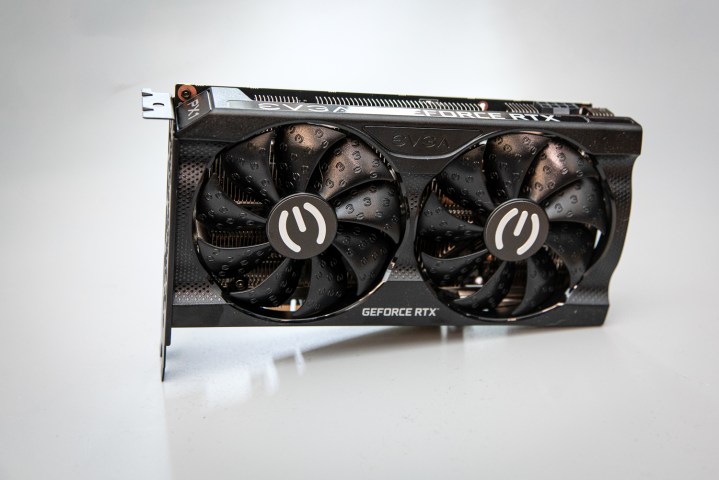
The RTX 3050 and RTX 3060 are focused on gaming first. They’re capable of handling some content creation workloads on the side, but if content creation is your primary focus, it’s better to upgrade to a more beefy GPU like the RTX 3070 Ti. Using the same test bench, here are a few results for creative workloads:
| RTX 3050 | RTX 3060 | |
| Blender BMW (lower is better) | 76 seconds | 45 seconds |
| Blender Classroom (lower is better) | 279 seconds | 208 seconds |
| Blender Koro (lower is better) | 227 seconds | 162 seconds |
| Pugetbench for Premiere Pro | 766 | 703 |
Across our three Blender renders, the RTX 3060 was about 40% faster. That’s the larger memory bandwidth and size at work, but also the bolstered core count. The RTX 3050 and RTX 3060 may not be creator-focused graphics cards, but the RTX 3060 gets much closer to that mark.
The RTX 3050 oddly saw a higher overall score in PugetBench for Premiere Pro. It’s not a massive difference, and Premiere Pro stresses the CPU and RAM as much as it does the GPU. If anything, our results show that the two cards perform around the same level in PugetBench, with some runs showing variations.
The sweet spot
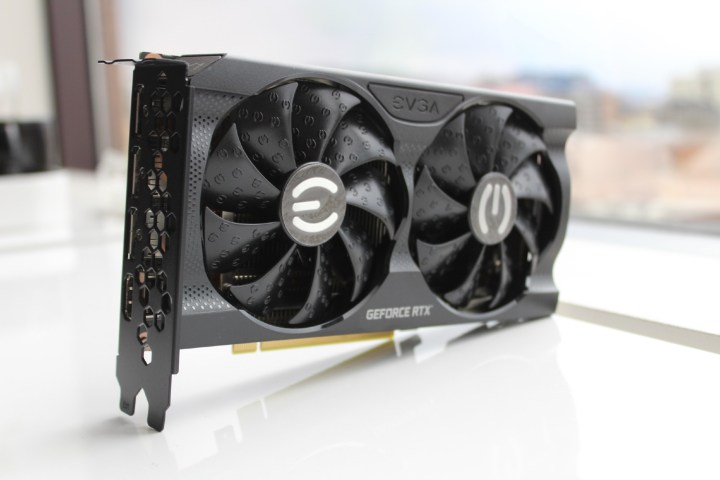
The RTX 3060 hits a sweet spot. It’s a 1080p graphics card targeting the highest graphics preset, even if it falls disappointingly short of the RTX 3060 Ti. The RTX 3050 isn’t a bad graphics card, but it doesn’t hit the same sweet spot as the RTX 3060. It struggles to handle AAA gaming at 1080p today, and a few years down the line, those issues will be even more apparent.
Price is the biggest issue. When the initial stock of RTX 3050 cards is gone, it’s tough to say how much cheaper it’ll be than the RTX 3060, which sells for as high as $850. With how GPU prices are now, it’s better to invest in something that will last for a while, and that card is the RTX 3060.
That said, it’s possible that $300 or more may separate the two cards in a few weeks. In that situation, the RTX 3050 is close enough — unless you can get an RTX 3060 for a particularly good price.
Editors' Recommendations
- Nvidia RTX 50-series graphics cards: news, release date, price, and more
- GPUs just broke a 25-year-old record
- CableMod’s adapters damaged up to $74K worth of Nvidia GPUs
- Nvidia’s RTX Video can upscale blurry YouTube videos
- These early RTX 4080 Super listings confirmed my worries about the GPU



